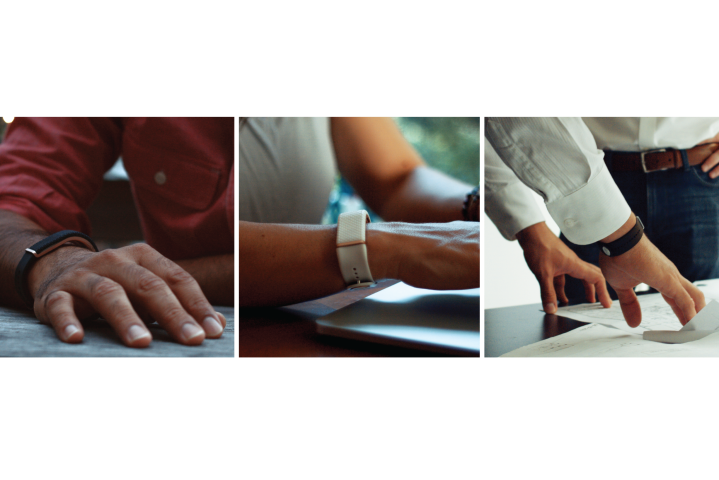
The wearable stress management device uses a variety of sensors to gauge the heart rate, skin conductance (i.e., moisture on the skin, which implies excitement), ambient light, motion and skin temperature. When the Olive notices higher-than-normal stress levels, it gives the wearer gentle haptic feedback or activates an LED light. The bracelet does the same when the wearer has scheduled a stress management exercise. A swipe one way across the surface of the bracelet launches the exercise, while a swipe in the other direction declines the exercise.
Related: Intel reveals ‘Mica,’ a luxury smart bracelet with a 1.6-inch touchscreen
The Olive isn’t just about nagging reminders to breathe in and breathe out: Double-tapping the bracelet is a way to say that you’re happy so you can go back and see what your day was like leading up to that moment. On the flip side, rubbing the Olive is a way to tell the bracelet that you’re in a stressful situation and in need of an immediate stress reduction exercise. “It’s like rubbing Aladdin’s lamp to call your genie,” according to the bracelet’s Indiegogo page.
By taking a look at your calendar, location and other personal data, the Olive promises a tailored stress management experience for wearers. It also learns from your daily activities and patterns, thereby improving the bracelet’s ability to rescue the wearer from stress overload.
While the Olive’s stress management power is fully unlocked when paired with a smartphone, the bracelet can also be used in standalone mode. It also comes with a standard USB charger, with a more stylish pedestal charger available as an upgrade.
Currently, there are two colors of the Olive available: white (Olea Rose) or black (Lugano Black). Bands are swappable, and more colors are promised for the future.
The Olive will retail at $150, though backers of the bracelet’s Indiegogo campaign can get a discount. Beta testers can get their wrists adorned with the Olive in May 2015, while the rest of buyers can expect to receive theirs in November 2015.
The crowdfunding campaign closes on Nov. 9. About five days in, the Olive has raised about 62 percent of its $100,000 goal.
Editors' Recommendations
- This bracelet helps you fall asleep faster and sleep longer
- Awesome Tech You Can’t Buy Yet: Robot arms and keychain-sized hard drives
- Forget ice — this cooler harnesses the power of the sun to chill your food


